1. Arctic Tern’s Nonstop Winter Vacation

The Arctic Tern is one dedicated traveler, migrating all the way from the Arctic to the Antarctic, flying over 20,000 miles to escape the harsh winter. But here’s the kicker—it doesn’t just migrate for food. It avoids winter altogether, basking in the eternal summer of the southern hemisphere. This impressive migratory bird spends the least amount of time in cold climates, making its entire existence an incredible winter survival strategy. Its long journey allows the tern to stay in warmer regions, avoiding the frigid temperatures of the North, which are often inhospitable for many species. By skipping winter entirely, the Arctic Tern gets the best of both worlds: it enjoys summer for nearly the entire year, spending the darkest, coldest months in the sunny south.
2. The Brown Fat of the Pika

Pikas, small relatives of rabbits found in mountainous regions, have a clever trick to survive freezing temperatures—they’ve developed a unique form of “brown fat.” This special fat stores energy and generates heat, allowing these cute creatures to stay warm during long, icy winters. They huddle together, relying on this energy-rich fat to stay cozy while managing to remain active, even when snow covers the ground. Pikas don’t just sit around waiting for the snow to melt; they collect plants during the warmer months, storing them in haypiles for food. Their brown fat helps them convert this energy into heat to combat the harsh cold. This survival strategy is crucial because the pika’s environment doesn’t always offer enough warmth, and its ability to remain mobile even in winter months is an essential skill.
3. The Dormancy of the Wood Frog
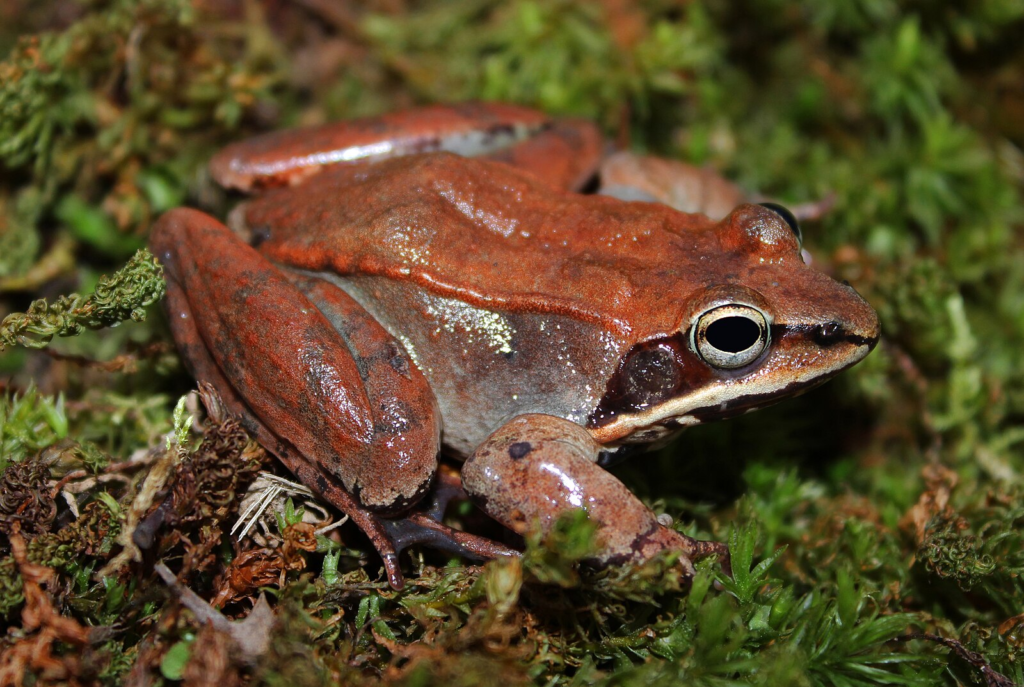
This little amphibian doesn’t shy away from freezing temperatures—it embraces them! The wood frog’s survival strategy includes freezing its entire body during the cold months. This means its heart stops, and it’s technically “dead” for part of the winter. But when spring arrives, it thaws out and resumes its life as if nothing happened. It’s like the ultimate winter nap, with a twist of true resilience. The frog’s blood is filled with antifreeze compounds that allow it to survive being frozen solid. This ability to endure ice ensures that the wood frog can avoid the harsher elements of the winter by simply ceasing all activity until the environment warms. While frozen, it might appear lifeless, but it’s merely a strategy to outlast the cold until life and warmth return.
4. The Marmorated Stink Bug’s Winter Slumber
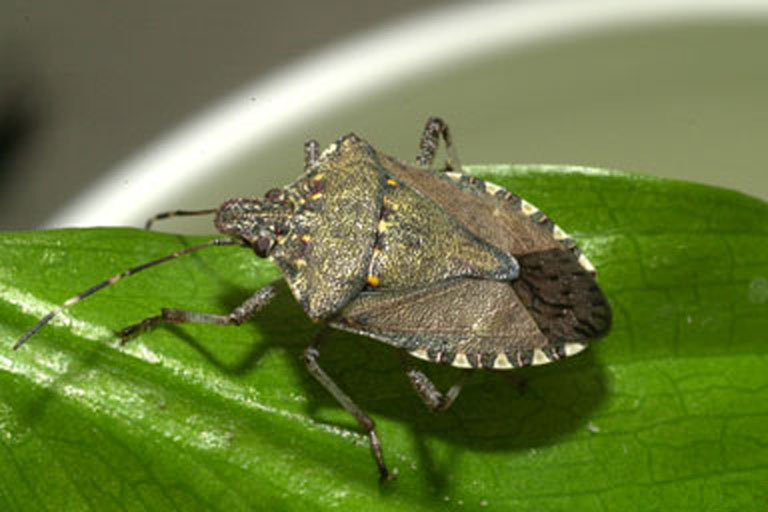
Marmorated stink bugs, known for their… well, stinky defense mechanisms, have an interesting winter strategy—they hibernate in large groups, often inside homes, barns, or other shelters. While hibernating, these bugs enter a state of diapause, which is similar to deep sleep. Their metabolism slows down, conserving energy until the weather warms up, and they can emerge ready to go on the prowl once more. This communal hibernation is crucial because it helps the stink bugs avoid freezing temperatures that would otherwise be fatal. Many people are familiar with these pests finding their way into homes as they seek out shelter for the winter months. While their presence can be unwelcome, it’s a testament to their survival skills. By finding a safe, warm place to hibernate, they make it through even the coldest winters.
5. The Snow Flea’s Antifreeze
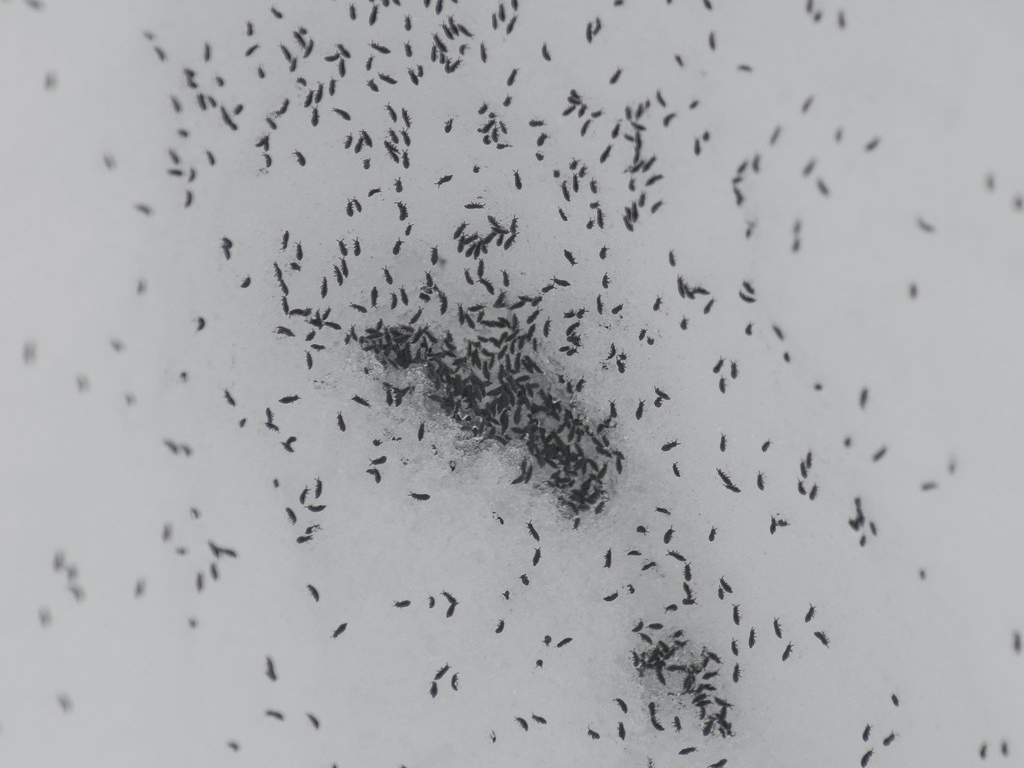
Snow fleas, not your typical “flea,” have a fascinating adaptation for surviving the winter. These tiny critters don’t just live under the snow; they’ve developed antifreeze proteins that prevent their bodies from freezing. These natural “antifreeze” agents help them survive temperatures that would kill most other insects. They’re often seen hopping on snowy surfaces, making the winter landscape a bit more lively than you’d expect. Snow fleas are not actually fleas but a type of springtail, a small insect that thrives in cold conditions. Their bodies produce a special protein that protects them from the freezing temperatures, allowing them to remain active in places that most insects would avoid. Despite their name, snow fleas play an important role in breaking down decaying organic matter, helping the ecosystem maintain a healthy balance even during winter’s harshest months.
6. The Bearded Vulture’s Bone-Dining Habit
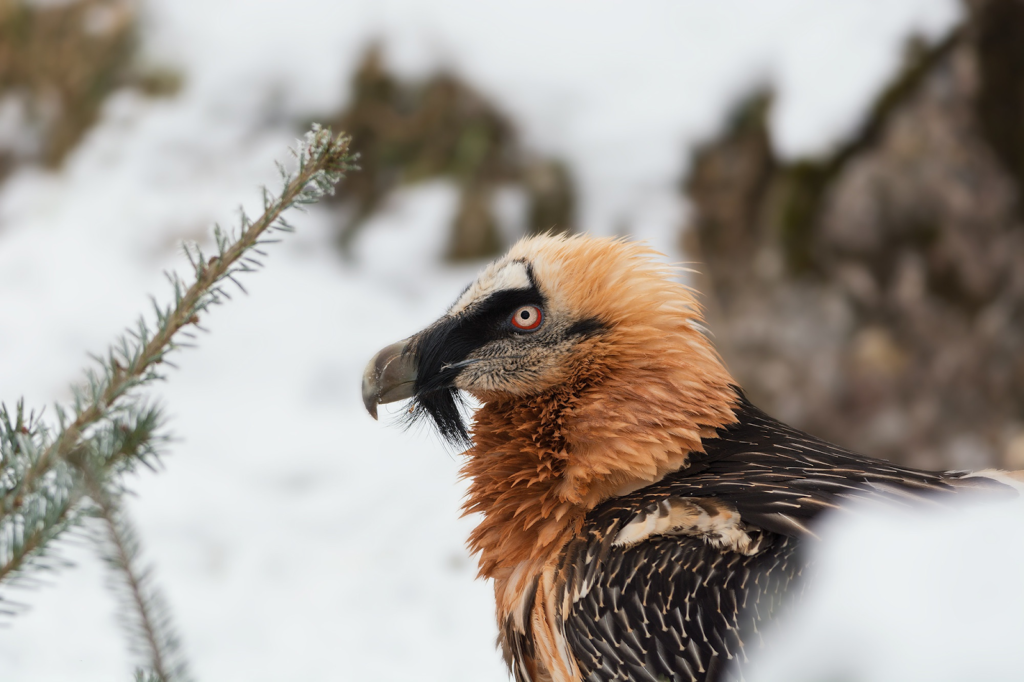
When food is scarce in the winter, the bearded vulture gets creative. Known for its bone-crushing skills, this bird has an unusual diet—it feeds on bones! By dropping bones from high altitudes onto rocky surfaces, it shatters them into smaller, digestible pieces. This strategy allows it to survive even during the harshest seasons when meat is harder to come by. Talk about eating in style! Bearded vultures have specialized digestive systems designed to break down bones and extract the nutrients within. They have strong stomach acids and even the ability to dissolve the bone matter completely. While other birds of prey hunt for live animals, the bearded vulture has made a name for itself by turning bones into a primary food source. This adaptation is especially useful in the winter when food is scarce, and carrion can be harder to find.
7. The Arctic Fox’s Winter Coat
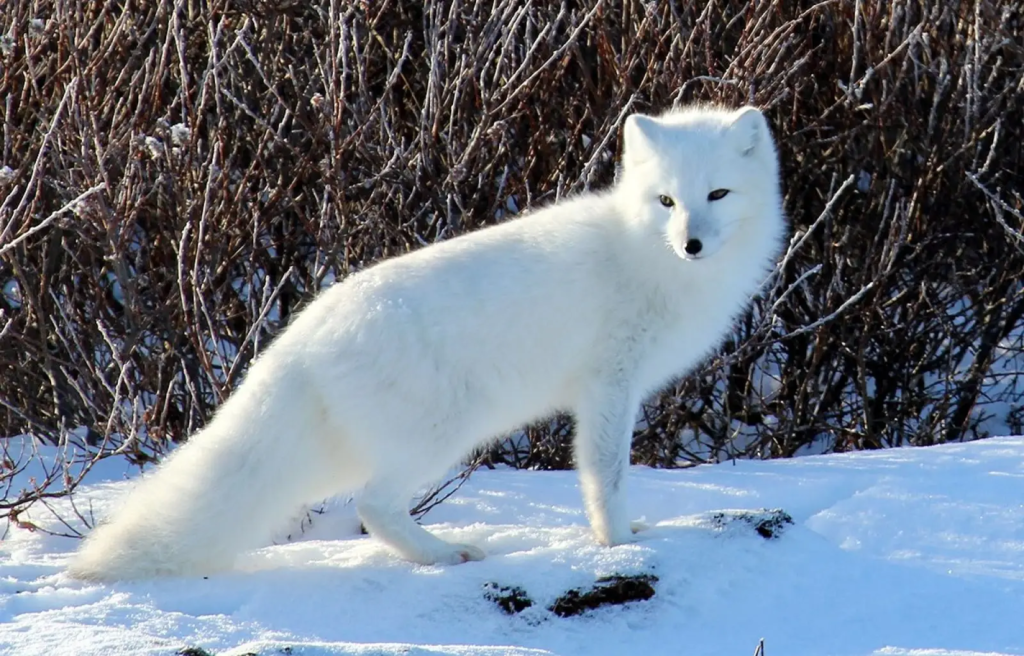
The Arctic fox is an expert at surviving the freezing cold thanks to its seasonal coat change. During the winter, it grows a thick, white fur coat that helps it blend into the snowy landscape. This camouflage keeps predators away while keeping the fox warm. It’s nature’s version of a high-tech winter jacket! In addition, its small, rounded body helps conserve heat, and its fluffy tail acts as a personal blanket. The Arctic fox’s thick undercoat traps air, creating an insulating layer that helps regulate its body temperature in extreme cold. This animal’s fur isn’t just for warmth—it also serves as a form of protection against the harsh winds and freezing snow. As winter sets in, the Arctic fox becomes an expert at staying hidden in plain sight, a true master of winter survival.
8. The Snowshoe Hare’s Seasonal Wardrobe

This rabbit isn’t shy about updating its wardrobe for winter. The snowshoe hare undergoes a remarkable transformation—its brown summer coat turns white to blend in with the snow. This makes it harder for predators to spot it, ensuring better survival odds. Plus, its large, furry feet are designed to help it move across deep snow without sinking, kind of like nature’s snowshoes. The snowshoe hare doesn’t just change colors—it also becomes more adept at navigating snowy terrain. Its wide feet allow it to travel more efficiently across deep snow, preventing it from becoming stuck or slowing down in its search for food. The hare’s ability to survive the winter is rooted in its ability to blend in and move swiftly through its environment, making it a resilient creature in snowy habitats.
9. The Ground Squirrel’s Deep Sleep

Ground squirrels take winter naps to a whole new level. These little guys hibernate in underground burrows, where they enter a state of torpor, significantly lowering their body temperature and slowing their metabolism. By doing so, they conserve energy and can survive without food for months. It’s like an extended sleepover underground—cozy and energy-efficient. During hibernation, the ground squirrel’s body temperature drops to match the surrounding environment, which allows it to endure even the most freezing conditions without using up its energy reserves. When it wakes up in spring, it’s ready to resume its normal activities. The ground squirrel’s deep sleep is a clever way to avoid the challenges of finding food during winter, ensuring that it doesn’t have to expend unnecessary energy in the harsh cold months.
10. The Woodchuck’s “No-Sleep” Strategy

Unlike other hibernating animals, the woodchuck (also known as the groundhog) has a slightly different approach. While it does enter a hibernation-like state, it doesn’t remain fully unconscious. The woodchuck can wake up periodically throughout the winter to check its surroundings, ensuring it stays safe from predators. This ability to “monitor” the world around it makes the woodchuck a unique winter survivor. It might not be as deeply asleep as other hibernating animals, but it still enjoys the benefits of energy conservation during cold months. By lowering its metabolism and entering a torpid state, the woodchuck avoids the challenges of finding food and enduring harsh temperatures while remaining vigilant enough to escape danger.
11. The Polar Bear’s Fat Reserves

Polar bears are famous for their ability to survive in the freezing Arctic, but what’s their secret? They rely on their massive fat reserves. These bears can accumulate up to 10 inches of fat, which insulates them against the cold and provides them with the energy needed to hunt for food in winter. The thick layer of fat, combined with their dense fur, helps keep the polar bear warm even in sub-zero temperatures. During winter, they often rely on hunting seals, but they can go for long periods without food, living off their fat stores. Polar bears have adapted to their harsh environment by becoming expert swimmers and excellent hunters, and their fat reserves ensure they survive the harshest winters. It’s like having a built-in survival kit!
12. The Reindeer’s Hoof Adaptation

Reindeer, or caribou, are perfectly built for the winter environment. One of their most fascinating adaptations is the unique structure of their hooves. These animals have large, wide hooves that help them traverse deep snow with ease. Their hooves also have a rough, spongy texture that provides excellent traction, allowing them to navigate slippery ice and snow without losing footing. During winter, reindeer also grow a thick coat of fur, which helps them stay warm despite the freezing temperatures. These adaptations allow reindeer to graze for food and move efficiently in the harsh conditions of the Arctic tundra. The animals are also known to migrate in herds, following food sources and maintaining warmth by sticking together, offering each other protection during extreme cold.
13. The Hedgehog’s Snuggly Winter Den
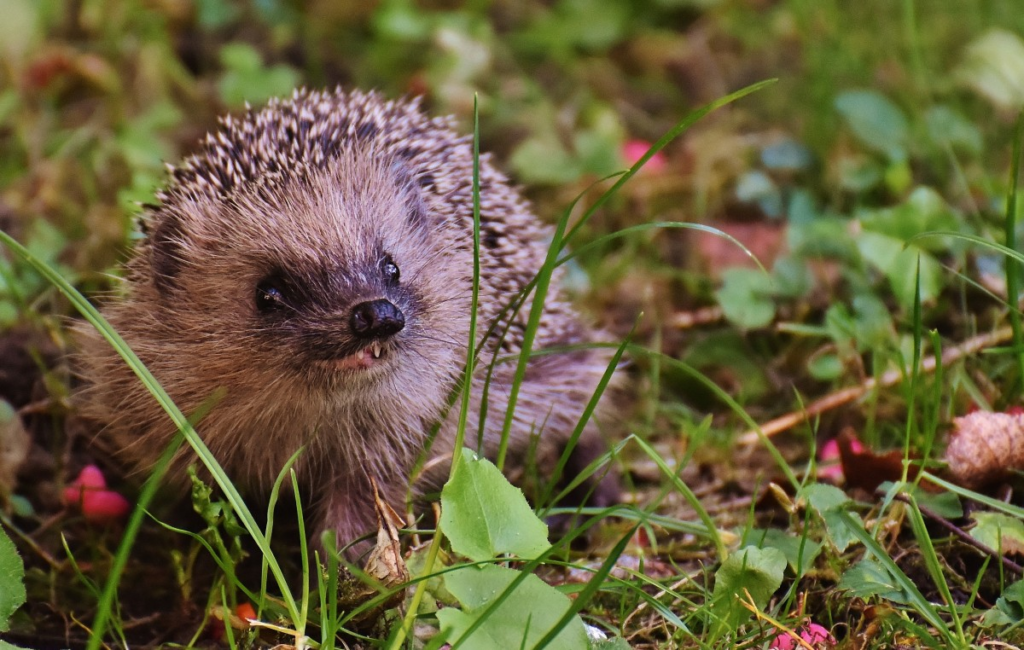
Hedgehogs are experts in surviving winter, and their strategy involves more than just hibernation—it’s about finding the perfect den. These little creatures build insulated nests out of leaves, twigs, and grass to keep warm during their long hibernation. By burrowing deep into their nests, hedgehogs can create a snug, warm environment, effectively shielding themselves from freezing temperatures. When winter sets in, hedgehogs slow down their metabolism and enter a deep sleep to conserve energy. They rely on fat reserves they built up during the warmer months, which allows them to survive until spring. This cozy den and hibernation combination make the hedgehog a true winter survivor. Once spring arrives, the hedgehog wakes up, ready to forage for food and resume its daily activities.
14. The Snow Leopard’s Silent Winter Stalk

Snow leopards have an edge when it comes to surviving winter—they are stealthy and incredibly well-adapted to cold environments. These magnificent cats have thick fur coats and large paws, which help them move silently through snowy landscapes. Their large paws act like natural snowshoes, preventing them from sinking into deep snow. Snow leopards are solitary hunters, and in winter, they rely on their keen sense of sight and stealth to stalk prey. The snow leopard’s winter survival is all about blending in—its spotted coat camouflages perfectly with the rocky, snowy mountains of the Himalayas. By staying low and hidden, snow leopards can outsmart larger predators and prey alike, making them formidable survivors in some of the coldest environments on Earth.
15. The Bison’s Thick Winter Coat

Bison are the quintessential symbols of North America’s winter resilience. These massive creatures grow thick, shaggy coats during the colder months, which help protect them from freezing temperatures and fierce winds. Beneath the outer fur, bison also have an undercoat that traps warmth, keeping their bodies insulated even in harsh conditions. Despite their size, bison are highly adaptable to winter. They use their large heads to push through snow, searching for grasses to feed on, and they can continue grazing throughout the winter months. Their resilience isn’t just about staying warm—it’s about their strength and ability to endure. Even in the harshest winter conditions, bison can often be found roaming the plains, showing off their determination to survive through even the coldest months.
16. The Arctic Hare’s Adaptability

The Arctic hare has a few clever tricks up its sleeve when it comes to surviving the extreme cold. One of its most remarkable adaptations is its fur, which changes color with the seasons. During winter, the Arctic hare’s fur turns a snowy white, making it almost invisible against the winter landscape. In addition to this perfect camouflage, the hare’s short ears and thick fur protect it from the freezing winds of the Arctic. Arctic hares are also known for their incredible speed—they can run up to 40 miles per hour, which helps them evade predators and find food quickly. Their ability to blend into the snow and outrun danger gives them a significant edge in one of the world’s coldest regions, ensuring their survival through long, harsh winters.
17. The Gray Wolf’s Pack Survival Strategy
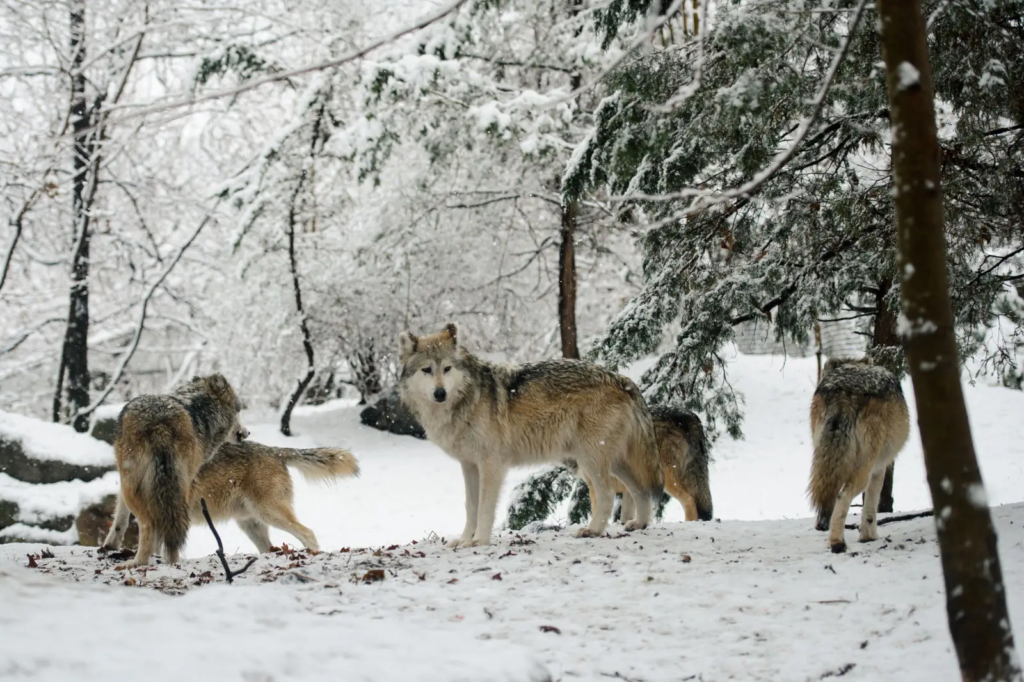
Gray wolves have a team approach to winter survival. By hunting in packs, wolves are able to take down prey much larger than themselves, ensuring that the pack has enough food to survive the winter months. Wolves have evolved to be highly social animals, and their pack structure is key to enduring the cold. Each member of the pack works together, with some wolves driving prey toward others who are waiting to ambush it. This cooperative hunting strategy ensures that the pack gets enough to eat during winter when food can be scarce. Additionally, wolves have thick fur coats and a high-fat diet to help insulate them against the cold. Their teamwork, combined with their physical adaptations, makes them expert winter survivors, thriving in some of the most challenging environments on the planet.
18. The Common Redpoll’s Winter Feasting
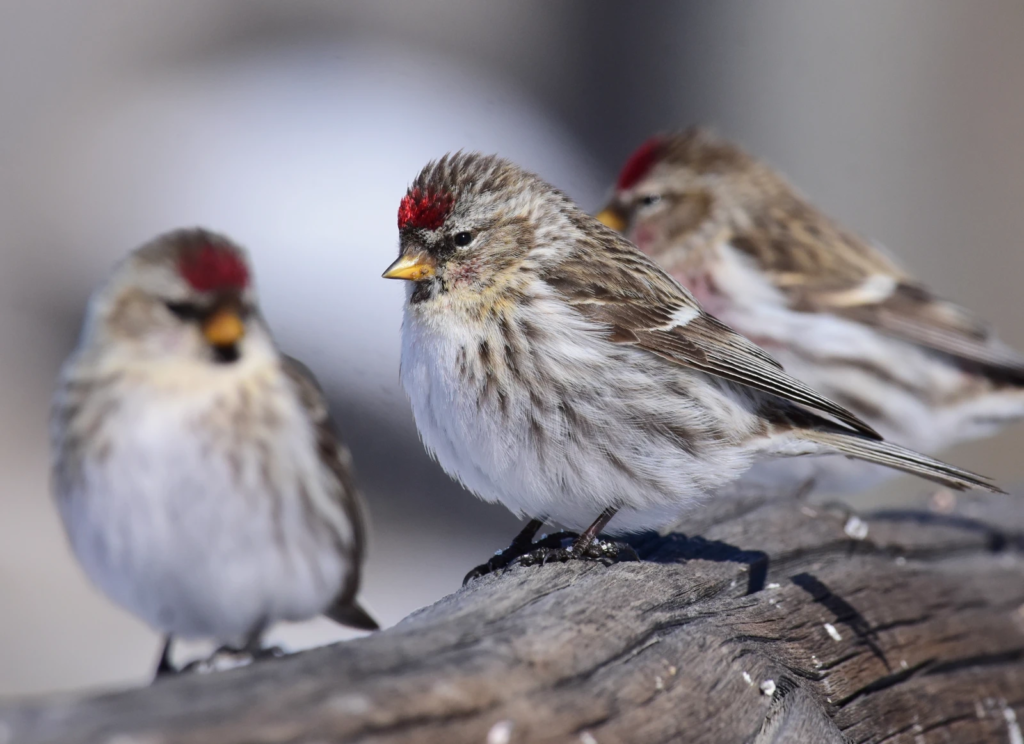
The common redpoll is a small, resilient bird that thrives in winter conditions. When the temperatures drop, redpolls don’t just endure—they thrive by feasting on seeds. These little birds are able to forage for food even in the most frigid environments, thanks to their specialized beaks and strong, nimble feet. The common redpoll has a thick layer of feathers that keeps it warm, and its body fat increases in the winter, providing much-needed energy during the colder months. By flocking together, these birds also benefit from the warmth of their peers. They find shelter in trees or underbrush, avoiding the brunt of the cold winds. Their ability to find food and stay warm despite the freezing temperatures makes the common redpoll a true winter survivor.


